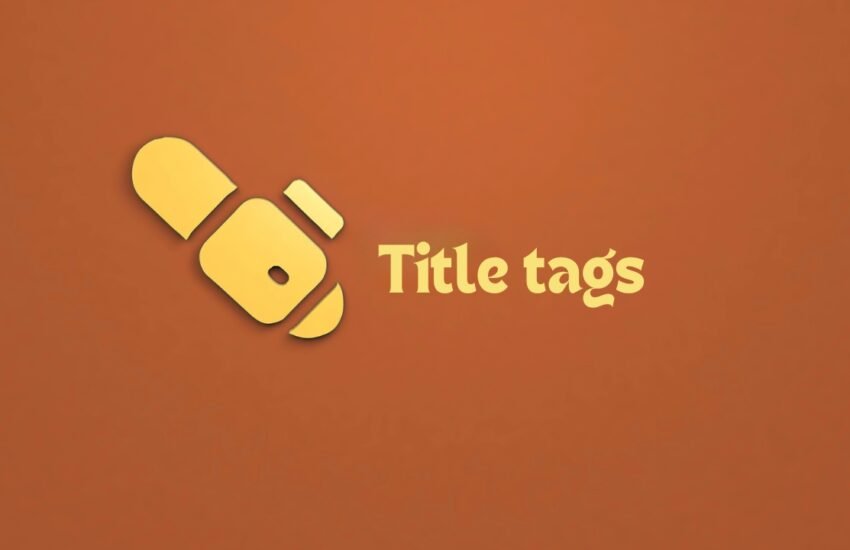In the digital era, where everything has to be seen and interacted with, search engine optimization of your site is needed more than ever before. Title tags are one major aspect of SEO that people forget about, but whose importance is huge. These little pieces of HTML code might appear as one of the small matters, yet they are crucial when it comes to enhancing the search engine ranking and user experience. Title tags are not just a strong ranking factor; they also serve as an overview of the contents to users since they are the first thing that users see in search engines. How then can you optimize your title tags to maximum effect? In this blog, we’ll deep dive into title tags and make your SEO strategy more productive.
What Are Title Tags and Why Do They Matter?
Title tags are HTML attributes that indicate the title of the web page. They appear in search engine results as well as on top of browsers when a page has been opened. Title tags can be viewed as a complex tool that can help a business achieve high search rankings as well as increased click-through rates (CTR), even though they may seem simple.
When your site is crawled by a search engine, it will look at the title tags to understand the content on your page. An effective title tag can significantly impact how your page is ranked and indexed. Rand Fishkin, an SEO expert, stated, “The title tag is the most important on-page SEO factor, bar none.” This underlines the importance of making it right.
The Influence of Title Tags on SEO Ranking
Title tags are used by search engines such as Google in the quick evaluation of a page’s relevance to a given search query. Google utilizes these titles in its algorithm to rank various pages based on the relevancy of titles to search terms. Thus, title tags play an essential role in search engine optimization, where the key terms should be included to improve rankings.
For instance, if you have a blog about “digital marketing,” using the term “digital marketing strategies” in your title tag helps Google understand that your content is relevant to users searching for this term. However, it’s not just about using keywords. The clarity, length, and structure of your title tags also matter. If your title tag is too long, it may get truncated in search results, removing valuable information.
Best Practices for Title Tagging
To get the most out of your title tags in terms of SEO, adhering to a list of best practices is crucial. To begin with, ensure that your title is concise and relevant. The number of characters displayed in Google usually ranges between 50-60 characters. If your title exceeds this length, it will be cut off in search results, losing important information.
Another vital aspect of title tags is the placement of keywords. Your most important keywords should appear at the start of the title as far as possible. This not only helps with SEO but also ensures that users can quickly understand what your page is about. However, it’s also essential to keep your audience in mind. While SEO is important, it’s also crucial to craft titles that attract real users. After all, they are the ones who will click on your link.
A veteran in the field of SEO, Neil Patel, writes, “A meaningful title tag can either define your click-through rate or ruin it.” This emphasizes the need to strike the perfect balance between keyword optimization and an engaging copy that encourages users to click.
How to Make Title Tags Engaging
A title tag is not only about keywords but also about appealing to your audience. You can add sentiment words and numbers to your title tags to help them stand out among other search results. Numbers tend to perform better in titles, e.g., “7 Tips” or “5 Steps,” as they give the reader an idea of what to expect. Sentiment words, like “best,” “ultimate,” or “essential,” can also grab attention and imply value.
For example, a title like “7 Essential Title Tags Tips to Boost SEO” is not only informative but also promises a tangible list of tips that will help readers succeed in the SEO game. Adding such details to your title tags is a great way to attract attention and increase your CTR.
Common Errors to Avoid in Title Tags
Even though title tags are crucial for SEO, many website owners tend to make simple mistakes that can negatively affect their ranking. One of the biggest errors is keyword stuffing. While keywords are important, it’s essential not to overuse them in your title, as this will make the title look spammy to both Google and potential customers. Aim for a natural-sounding title while still fitting your target keywords.
Another mistake is using vague or generic titles. Titles like “Home” or “About Us” are too general and don’t provide enough information to search engines or users. Be specific about the topic of your page and how it can benefit the reader. A well-defined, narrow title tag will not only help with SEO but also attract users who are genuinely interested in what you’re offering.
Title Tags and User Experience (UX)
Another factor that must be considered when crafting your title tags is user experience (UX). While these tags play a significant role in SEO, they are also the first impression users have when browsing through search results. A descriptive title tag creates an immediate picture of what your page offers and why the user should click.
For example, a title tag like “5 Secrets of Effective Time Management” is bound to be more successful than a vague title like “Time Management Tips.” By clearly stating what the user can expect, you’re enhancing their experience and increasing the likelihood of engagement.
Why Testing and Optimization Are Important
Once you have created your title tags, it’s important to monitor their performance. Tools like Google Analytics and Google Search Console can help track the performance of your titles in terms of CTR and rankings. If your titles aren’t delivering the desired results, don’t hesitate to make adjustments. Testing alternative versions of the title may provide insights into which phrases resonate best with your audience.
For example, you might test two different versions of a title tag: one that focuses on keywords and another that emphasizes a more engaging, emotionally-driven approach. By comparing the performance of both versions, you’ll learn which one works best for your audience.
Conclusion
Title tags may seem like a small detail, but they play a critical role in both SEO and user experience. By following best practices such as using relevant keywords, including numbers and sentiment words, and avoiding common mistakes, you can craft title tags that not only improve your search rankings but also attract more clicks. Don’t forget, as Rand Fishkin mentions, “A strong title tag is the foundation of a strong search engine presence.”
As you continue to perfect your SEO strategy, remember that title tags are an essential component that shouldn’t be overlooked. Take the time to optimize this element of your site, and watch it drive more organic traffic to your pages.
By focusing on creating high-quality title tags, you can ensure that your content is visible in search engines and appealing to your audience. A well-crafted title tag will help you stand out in the digital landscape, ultimately boosting your SEO performance and increasing user engagement.
Final Thoughts
Optimizing title tags is both an art and a science that every website owner and SEO professional must master. With the right approach, you can improve your search rankings, CTR, and overall online visibility. So, when you’re working on your website’s SEO, don’t underestimate the power of the title tag—it could make all the difference in your digital success.
you may also like
Pew Research Reveals How Google AI Overviews Are Depriving the Web Ecosystem



